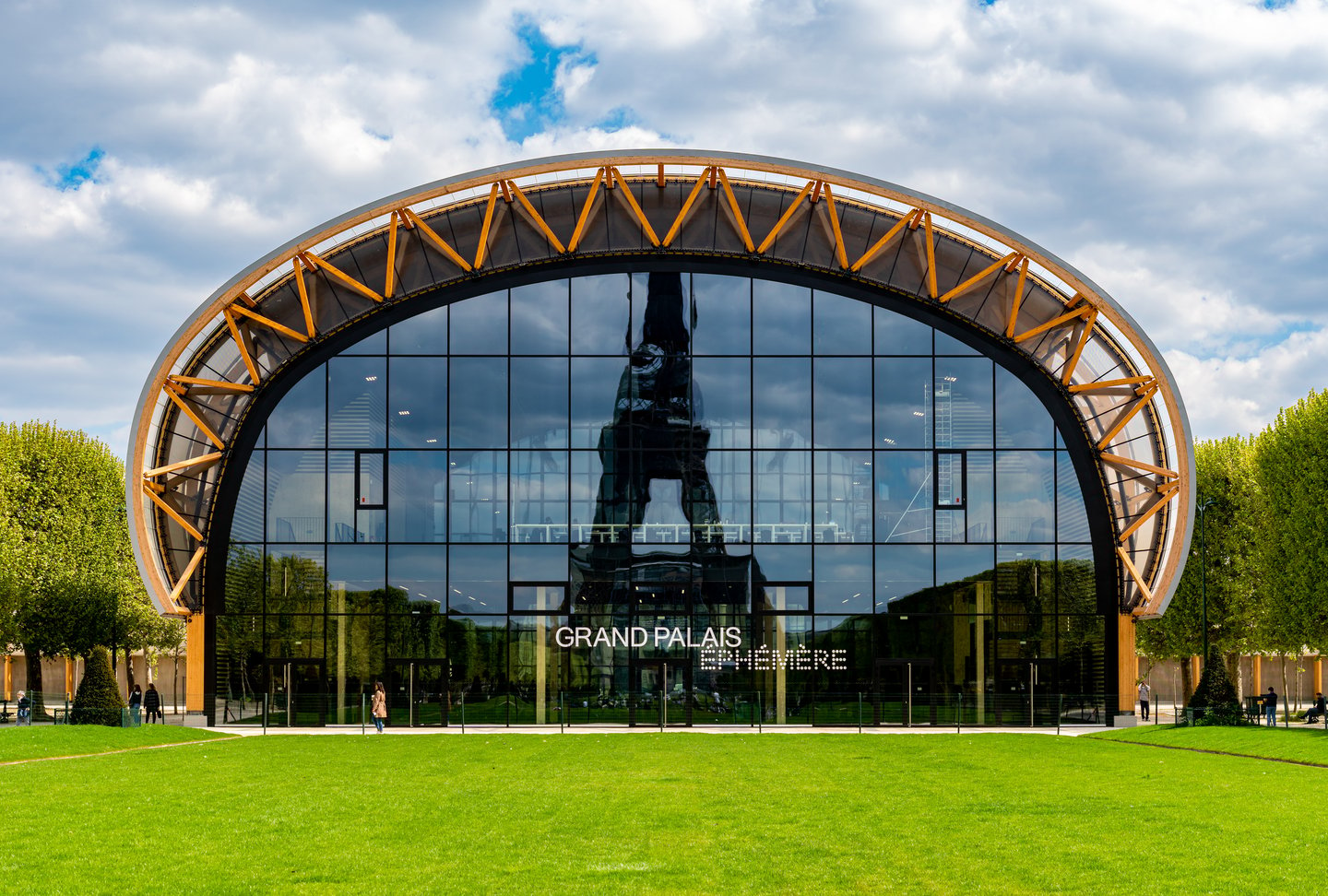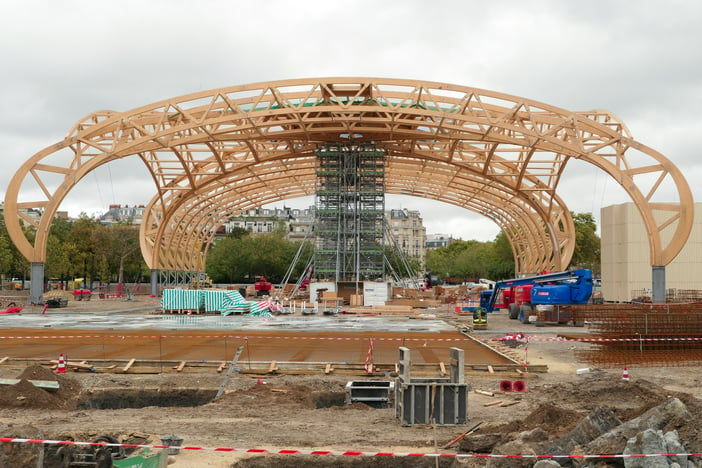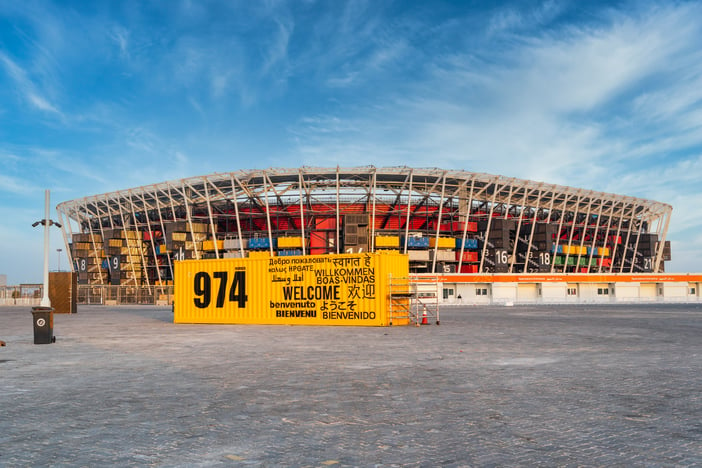Published on
Ephemeral architecture

In 2024, Paris, home to the Eiffel Tower (built in two years for the 1889 World’s Fair in Paris and initially called the "300m Tower"), will be hosting the Olympic and Paralympic Games...While Doha is already buzzing with the opening of the Football World Cup.
With around 600 days to go until the Paris 2024 Olympics and Paralympics, described as the "biggest event ever organised in France", taking place from 26 July to 11 August 2024, and just as the 2022 Football World Cup kicks off in Qatar, ephemeral architecture is back in the headlines.
Ephemeral architecture projects in connection with a cultural, tech, sales or sports event will be geared towards this short time period at each stage of their life cycle: from their design, during their construction using easy-to-build materials, and during their use, all the way through to their move, deconstruction or repurposing.
What is ephemeral architecture?
There are two defining features to this type of architecture, which set it apart from permanent forms.
First, because solid foundations built to last are not a requirement, perishable materials may be used as well as specific construction techniques.
Second, an ephemeral structure serves a very distinct purpose – in no way is “ephemeral” synonymous with provisional.
The temporality of such a building thus allows for tremendous creativity, encouraging bold and adventurous constructions. These are often at the cutting edge of innovation in terms of technique and choice of materials. They are, in some ways, a cultural signature in that they express the latest trends of the “time”.

The origins of ephemeral architecture
Ephemeral structures were known during the times of the Egyptians and the Romans. They mainly took the form of the elevation of triumphal arches in honour of victorious generals. In Europe, this arch-building tradition would endure until the Middle Ages to honour a sovereign’s visit to a city.
As customs changed, ephemeral architecture rose in prominence. In Renaissance times for instance, when a monarch travelled through a new city, this would be completely transformed. Celebrations gradually changed too, taking on a more religious dimension rather than military.
Fast-forward to modern times, with all their social, cultural, industrial, scientific and technological upheavals, and the reach of these events would extend beyond the boundaries of the city.
Today, the world’s capitals and major cities compete to host world’s fairs and the Olympic Games. The buildings erected for these events become fully-fledged national showcases and drivers of economic and social growth for a very specific period of time.
2022 and 2024 provide us with iconic examples
On Place Joffre in Paris, the Grand Palais Éphémère opened in May 2021, for a 4-year period, while the renovation work is going on at the Grand Palais. Designed by Jean-Michel Wilmotte, this 10,000 sq.m. timber structure installed on the Champ-de-Mars can accommodate a large number of visitors in an efficient, comfortable building. It is the venue for all sorts of events, including, for the 2024 Olympics and Paralympics, the Fencing and Taekwondo competitions.
Meanwhile, for the 2022 Football World Cup (from 20 November to 18 December 2022), in Doha Qatar built “Stadium 974”, also known as the “Ras Abu Aboud Stadium”, a temporary, transportable venue using recycled shipping containers. With a capacity of approximately 40,000 seats, it was designed by the Norwegian architecture firm Fenwick Iribarren Architects.

The challenges of ephemeral architecture
With strict deadlines to abide by, temporary buildings must absolutely stay on schedule and therefore call for maximum productivity. Schedule management, task optimisation and the ability to respond quickly during information exchanges are therefore key to delivering on time and on budget.
Also shaping ephemeral structures are major technological challenges where data transfers and records are strategic for easier use and maintenance in complete security throughout the event.
When these projects are large-scale, they often require coordination of teams from different nationalities. In this context, digital technology, via Kairnial’s collaborative platform, will have the advantage of being a common language for seamless information and document sharing.
Sources :
WIKIPEDIA, PARIS2024, UNIVERSALIS, ARCHITECTURE COMMERCIALE, PARIS, WIKIPEDIA, OSTADIUM et CNDB

